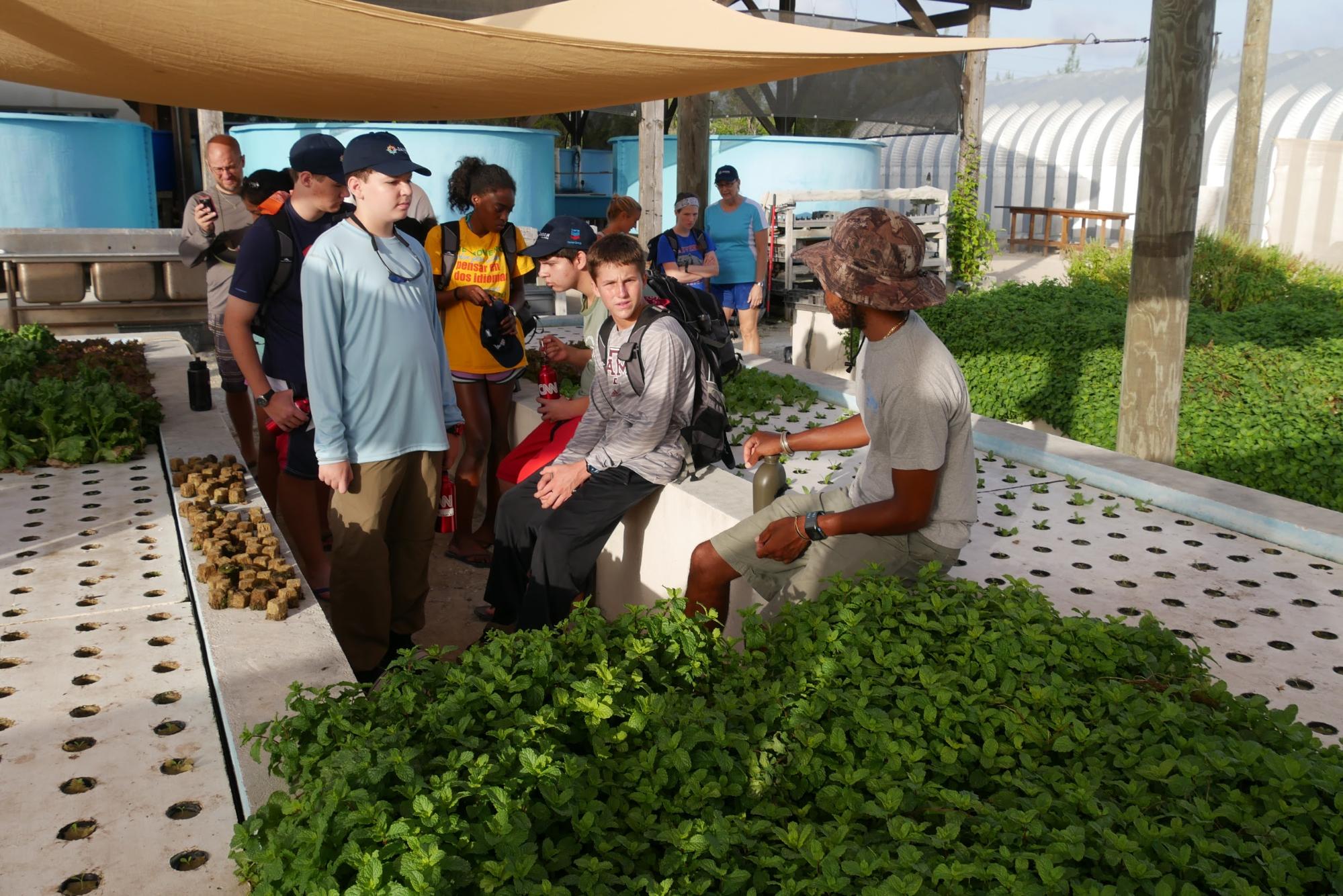
Today’s Argonaut Adventure began with an exciting and informative tour of the Cape Eleuthera Facility focusing on Sustainability. Stan, our guide, showed us how the facility uses wind and solar power for energy. Stan demonstrated how the building collects energy from the sun and a wind turbine, and converts it into electricity for the entire area. Stan also explained how residents save energy by turning off lights and fans, and by using electrical devices sparingly throughout the day.

Recycling and reusing materials is a daily occurrence at the facility. Materials such as tires, pvc pipe, metal, aluminum, plastic, cardboard, and paper are used for other purposes or incinerated. What we found interesting was how the facility uses cooking oil brought in from cruise ships to recycle into biodiesel fuel to power the vehicles at the facility.
As you walk about the facility, you would not believe that the soil could provide enough nourishment for plant life, but the scientists use methods such as permaculture to allow plant life to flourish and provide food. Through permaculture, animal and plant functions and processes are integrated. For example, before planting, chickens are let out, adding fertilizer to the soil with their droppings and eating small weeds. Next, goats are released to eat and clear all of the vegetation and larger weeds. Pigs are then released to till and turn the soil over. What a simple and natural way to farm and grow food. Many of the plants grown there are also used as medicine to help with digestion and respiratory problems. One plant is even used as a vitamin supplement and added to tea.
Stan showed us a special area where fish called tilapia and plants are grown together. The tilapia depend on the plants for clean water and the plants depend on the fish for nutrients. The practice is called aquaponics. The plants use the fish waste for nutrients, and this keeps the water clean for the fish. This is a great example of recycling water. It is a completely closed system that provides enough lettuce to feed all the residents salad for 2 meals a day.
 Not only is the farming extremely natural so is the harvesting of the tilapia. We all got to fillet tilapia today. Before filleting, Stan put the tilapia on ice, because it is the most humane way to euthanize them. When the fish were ready, Stan and Kristen gave us a quick tutorial, and then we tried filleting. Some of our first tries at filleting were horrible, but we learned from it! After struggling with one side, most of us flipped the fish over and did much better on the other side.
Not only is the farming extremely natural so is the harvesting of the tilapia. We all got to fillet tilapia today. Before filleting, Stan put the tilapia on ice, because it is the most humane way to euthanize them. When the fish were ready, Stan and Kristen gave us a quick tutorial, and then we tried filleting. Some of our first tries at filleting were horrible, but we learned from it! After struggling with one side, most of us flipped the fish over and did much better on the other side.
We also had to complete a swim check and snorkeling class today so that everyone was comfortable with their snorkel gear. Snorkeling was one of my fears because I’ve never swum in such deep water. However, it was pretty interesting seeing schools of fish, stingrays & sea shells. We also looked for coral and other types of marine life. At times, it was windy and salt water would spill into the snorkel - that was rough. But other than that, it was an amazing experience. I would do it again!
